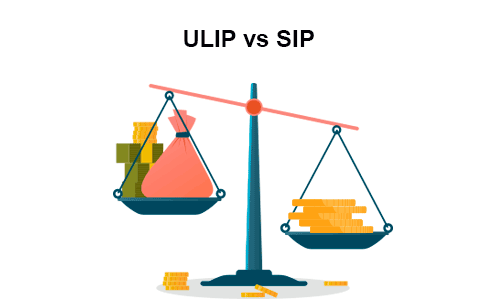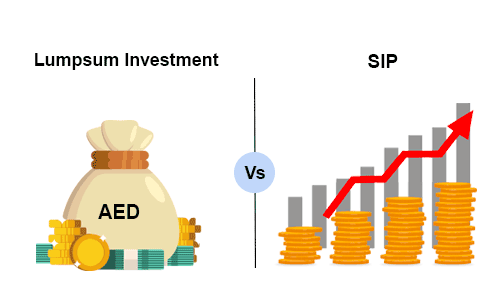How to Invest in SIP?
Investing in a Systematic Investment Plan (SIP) is a simple and effective way to grow your wealth over time with small, regular contributions. Instead of committing a large lump sum upfront, you can invest fixed amounts at regular intervals, making it easier to stay disciplined and manage risks.
To get started, however, you may wonder ‘How can I start SIP?'. This question is especially important if you’re an NRI who wishes to invest in the Indian market.
So whether you are wondering how to create an SIP account or how to invest directly in SIP, keep on reading the article below!
Compare & Invest in Best Investment Plans in UAE -
Some of the best Investment quotes in UAE & Dubai are:





How Does an SIP Work?
Before moving on to our key query here, let’s quickly understand how an SIP (Systematic Investment Plan) works —
- Auto-Debit: You specify an amount that is automatically deducted from your bank account
- Units Allocation: The deducted amount is used to purchase mutual fund units based on the current Net Asset Value (NAV)
- Flexible Contributions: You can adjust the amount or frequency of your SIP based on your goals and risk appetite
- Compounding: SIPs leverage compounding, which can lead to attractive returns over time as your investment grows
Example
You invest Rs. 1,500 (AED 64*) on a monthly basis in a mutual fund. This fund delivers an annual return of, say, 12%.
If you invest in the same for 10 years, the total amount invested by you will be Rs. 180,000 (AED 7,634*). The returns, at the given rate, will be around Rs. 168,509 (AED 7,146*). This gives you a total investment value of around Rs. 348,509 (AED 14,781*).
*AED to INR rates are subject to change
SIP Calculator
How Can I Start SIP Investment?
Here’s a detailed guide on how to start investing in SIP mutual funds —
1. Select a Mutual Fund Provider
Research and choose a mutual fund provider that aligns with your financial goals, risk tolerance, and preferred investment strategy. Consider factors like past performance, types of schemes offered, and the reputation of the fund house.
In the UAE, you can invest in local or global mutual funds through top banks. In India, you can choose from a wide range of mutual fund houses.
2. Complete KYC (Know Your Customer) Process
KYC is mandatory for any financial investment. You'll need to submit documents like –
- Passport
- Address proof
- PAN card (for Indian investments)
- Recent photograph
In the UAE, the KYC process can be done online through your bank or investment platform. To invest in India, meanwhile, you can complete the process through authorised banks or post offices.
3. Open an Investment Account
If you don’t have an existing investment account, you will need to open one with your chosen mutual fund provider. This is a simple process, where you'll provide your KYC documents and personal details.
Some platforms allow you to open a Demat and trading account if you plan to invest in stocks alongside mutual funds.
Note: If you are an NRI, choose between a Non-Resident External Account (NRE) or a Non-Resident Ordinary (NRO) Account to invest in Indian mutual funds.
4. Decide the Amount and Frequency of Investment
Based on your financial goals (e.g., retirement planning, children’s education, and more), decide how much you want to invest regularly in SIP.
SIPs typically allow flexibility in investment amounts. You can start with as little as Rs. 500 (or its equivalent in other countries) and increase it as your financial situation improves. Set a fixed monthly, quarterly, or annual contribution.
Note: You can opt to invest directly or via Power of Attorney (PoA) in India.
5. Select the SIP Date
Choose a date that works best for you. This can be around the time when you receive your salary or a set date each month for easy tracking.
You can even choose multiple dates if you want to split your investment across various schemes.
6. Fill Out the SIP Registration Form
Submit your SIP registration form online or offline, along with the required documents, such as identity proof, address proof, and a cancelled cheque (for bank details).
Online platforms make the process faster by allowing you to link your Demat account and auto-debit instructions.
7. Review and Confirm
Double-check all the details of your SIP investment, including the scheme, amount, frequency, and start date.
Important: Make sure your bank account has sufficient balance for the SIP deduction on the chosen date.
8. Track and Adjust SIP
After starting your SIP, monitor your investments regularly to track their progress.
You can modify the investment amount, switch schemes, or stop the SIP at any time based on your financial situation and goals.
9. Enjoy the Power of Compounding
SIP investments benefit from the power of compounding as your returns earn returns over time. Be patient — SIP is designed for long-term growth.
How to Submit the SIP Application Form Online?
Submitting the form online is a simple process. Here’s how —
- Create a new account or log in if you're an existing user
- Next, fill in your KYC (Know Your Customer) details to complete your registration
- Once done, proceed to make the necessary online payment to finalise the submission
Things to Consider Before Investing in SIP
Here are certain things to consider before starting to invest in SIP —
- Define Your Investment Objective: Clearly identify whether your goal is long-term wealth creation, saving for retirement, or short-term financial needs
- Understand Your Risk Appetite: Choose a fund type that suits your risk tolerance — low, moderate, or high
- Review Fund Performance: Study the historical performance of the fund (5-10 years) to assess its potential returns
- Select the Right Fund House: Research the fund house’s reputation and the schemes they offer to ensure they meet your investment goals
- Check for Lock-in Periods: Be aware of any lock-in periods, particularly with specific funds like ELSS
- Understand Exit Load: Verify if there's an exit load, which may apply if you withdraw your investment early
- Consider Your Investment Horizon: SIPs are best suited for long-term investments (5-10 years) to generate significant returns
- Use an SIP Calculator: Calculate potential returns and determine how much you need to invest monthly to reach your financial goals
- Seek Financial Advice: Consult a financial advisor to get personalised guidance, which can help you select the best SIP for your needs
Frequently Asked Questions
1. How to directly invest in SIP?
To start an SIP, choose a mutual fund that fits your financial goals, open an investment account with a bank or platform, complete the KYC process, select the amount to invest, and set the frequency (monthly or weekly). Once done, you can start investing by following the online or offline application process.
2. How to create an SIP account?
To create an SIP account, first select a mutual fund provider or platform, complete the KYC, and choose the fund scheme. Once done, link your bank account, set the SIP amount and start date, and confirm the registration to begin investing.
3. Can I invest ₹1000 per month in SIP?
Yes, you can start an SIP with as little as Rs. 1000 per month. Many mutual funds allow you to start with Rs. 500, making SIPs an accessible option for those with limited funds.
4. Is SIP 100% safe?
No, SIP investments are not 100% risk-free. The returns depend on the performance of the underlying mutual fund, which is influenced by market conditions. However, SIPs offer diversification along with long-term growth potential, which can mitigate risk over time.
5. Is SIP better than FD?
SIPs generally offer higher potential returns than Fixed Deposits (FDs), especially over the long term. However, FDs are safer as they offer guaranteed returns. SIPs come with market risk but can provide better returns for long-term investors willing to take some level of risk.
6. How to buy SIP in UAE?
In the UAE, several prominent banks offer opportunities to invest in mutual funds through a Systematic Investment Plan (SIP). The list of top banks where you can invest in mutual funds via SIP includes Citibank, FAB (First Abu Dhabi Bank), and more.

More From Investment
- Recents Articles
- Popular Articles






.jpg)










.jpg)
.jpg)

















